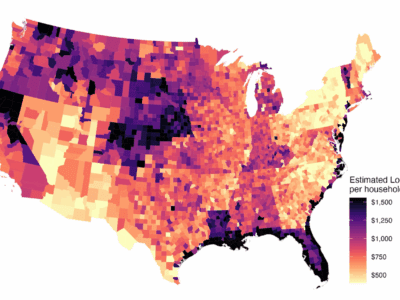Capturing Methane — Agricultural Waste and Landfills
Barriers to Solutions, continued
In California, over fifty percent of methane emissions come from the agriculture sector and over twenty percent from landfills. Most of the agriculture emissions come from manure and enteric fermentation, sometimes referred to as “cow burps.”
As is the case with many sources of greenhouse gas emissions, there are many potential solutions for limiting and capturing methane emissions from agriculture and landfills and at least as many barriers. In the world of manure emissions, there are non-digester solutions and digester solutions. As usual, the Air Resources Board has done an excellent job in compiling those solutions, evaluating them, and identifying some of the challenges associated with them. Unlike methane emission from oil and gas operations, agricultural emissions are not primarily about leak detection and monitoring.
For digesters, some technological issues remain, but many of the issues are around cost and logistics, including proximity of manure to digester. ARB estimates that we may need 200 digesters in California alone to get to the 40% emission reduction called for by 2030. Managing manure through digesters also requires a change in operation, farmer education, markets. Methane from manure can be added to the natural gas pipeline system, but that has faced many obstacles, including opposition from utilities concerned about price and contaminants. That is changing, as utilities recognize greater value in biogas. Markets for biogas are also growing in farming communities, precluding the need for injection into the pipeline system. Digesters themselves raise issues around concentrated pollution and air emissions, which ARB and others are grappling with. Multiple barriers have made methane capture from manure slow and uneven. The substantial climate gains from capturing methane emissions, really require that we do more and do it faster.
Enteric fermentation emissions represent almost thirty percent of all methane emissions in California and worldwide. Strategies to reduce those emissions include changing animal feed, improving grazing and grassland management, and providing additives (such as garlic and oranges). Enteric emissions reduction is the subject of pilot projects and on-going research, and emission strategies are less well developed.
Landfill gas results from the breakdown of organic material in landfills. The captured gas is a product that can be used in multiple ways. The United Nations’ Climate and Clean Air Coalition has succinctly stated the barriers: “Safely and effectively capturing landfill gas requires money and technical know-how, which means many communities do not have the technical or financial resources to begin landfill gas capture projects. For communities that do begin projects, many lack adequate funding for ongoing maintenance or operations, leaving landfill gas capture operations defunct or in disrepair.” Like many climate solutions, this comes down to political will and priorities.
In 2019, as the Amazon burns, Greenland melts, and Dorian becomes the most powerful hurricane to reach land in the Bahamas, can we find the political will and priority to make the investments and take the action needed to implement known and effective solutions? Methane emission control should be very high on the priority list, as should other short-lived pollutants, which I will discuss next time.
Reader Comments
2 Replies to “Capturing Methane — Agricultural Waste and Landfills”
Comments are closed.







Given the alarming increases in methane concentrations in recent years, this is a really important issue. Thanks for this. Wil
Good summary. Of course, even with the best of intentions, many small or rural communities will never have the resources to build modern methane capture systems. California policy often seems predicated on bludgeoning local governments into doing the state’s will, backed up by legislative fictions that the state’s mandates “impose no new costs on local government.” The result is often a good plan with terrible implementation. If this is truly a California priority, the state will have to find substantial resources to make it happen.